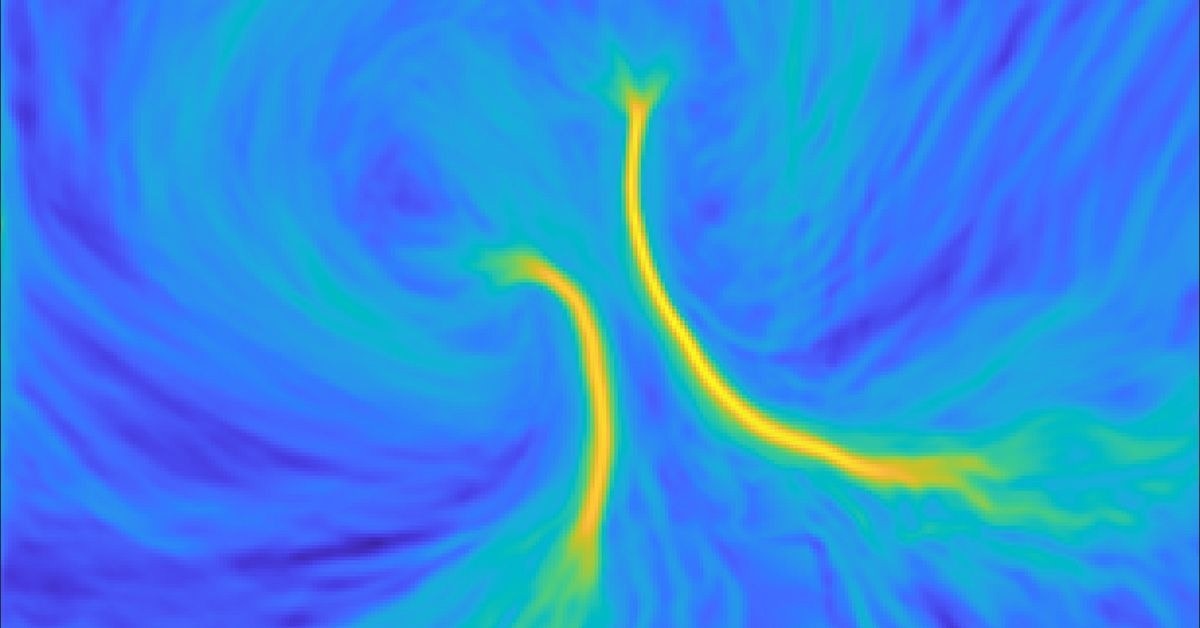One of life’s enduring fundamental questions revolves around the process of development. Consider human growth—how do cells autonomously arrange themselves into structures like skin, muscles, or bones? How do they coalesce to form intricate organs such as the brain, fingers, or spine?
 A snapshot of the development of twin chick embryos. The yellow streaks mark the future spinal cords. Image Credit: Mattia Serra group/University of California San Diego.
A snapshot of the development of twin chick embryos. The yellow streaks mark the future spinal cords. Image Credit: Mattia Serra group/University of California San Diego.
Although the answers to these questions remain elusive, scientists explore the phenomenon of gastrulation as a key aspect of understanding the transformation of embryonic cells from a single-layered structure to a multidimensional form with a primary body axis. In the context of human development, gastrulation typically occurs approximately 14 days after conception.
Given the ethical constraints of studying human embryos at this stage, researchers from the University of California San Diego, the University of Dundee (UK), and Harvard University turned to chick embryos as a viable alternative. Chick embryos share notable similarities with human embryos during this developmental stage.
The collaborative research, spearheaded by UC San Diego Assistant Professor of Physics Mattia Serra, exemplified an ideal loop—a synergistic blend of theoretical and experimental science.
Serra, a theorist specializing in discerning emergent patterns in complex biophysical systems, collaborated with his team to construct a mathematical model based on insights from biologists at the University of Dundee.
Remarkably, the model accurately predicted gastrulation flows—the intricate movements of tens of thousands of cells throughout the entire chick embryo—observed through microscopy. This marked the first instance of a self-organizing mathematical model successfully replicating these flows in chick embryos.
The researchers sought to test the model's predictive capabilities by subjecting it to perturbations—altering the initial conditions or present parameters. Surprisingly, the model generated cellular flows not naturally observed in chicks but documented in two other vertebrate species: frogs and fish.
To validate these unexpected results, biology collaborators mimicked the precise perturbations from the model in the lab using chick embryos. Astonishingly, these manipulated chick embryos exhibited gastrulation flows consistent with those naturally observed in fish and frogs.
Published in Science Advances, these findings imply that the underlying physical principles governing multicellular self-organization may have evolved consistently across vertebrate species.
Fish, frogs and chicks all live in different environments, so over time, the evolutionary pressure may have changed the parameters and the initial conditions of embryo development. But some of the self-organizing core principles, at least in this early stage of gastrulation, may be the same in all three.”
Mattia Serra, Assistant Professor, Physics, University of California San Diego
Currently, Serra and his colleagues are exploring additional mechanisms responsible for generating self-organizing patterns on an embryonic scale.
Their aim is to leverage this research to propel advancements in biomaterials design and regenerative medicine, with the ultimate goal of enhancing human longevity and well-being.
The human body is the most complex dynamical system in existence. There are so many interesting biological, physical and mathematical questions about our bodies — it’s beautiful to contemplate. There is no end to the discoveries we can make.”
Mattia Serra, Assistant Professor, Physics, University of California San Diego
Source:
Journal reference:
Serra, M., et al. (2023) A mechanochemical model recapitulates distinct vertebrate gastrulation modes. Science Advances. doi.org/10.1126/sciadv.adh8152.